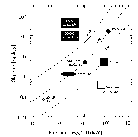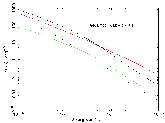 Figure 3: A compendium of hard x-ray surveys.
Figure 3: A compendium of hard x-ray surveys.
The core programme aims at identifying spectroscopically significant samples of XMM sources at several flux limits and Galactic latitudes
In order to avoid severe vignetting and confusion due to an excessive degradation of the PSF, we resort to X-ray sources found within a radius of 12' from the optical axis. The area covered per pointing for survey purposes is therefore ~ 0.13 deg2.
The high galactic latitude core programme consists of 1000 sources each in three different flux classes (>10-15, >10-14, >10-13, erg cm-2 s-1) given in the above passband. The relevance of these surveys is highlighted in graph 3 against existing and planned surveys.
For the logN-logS function prediction we used the Hasinger et al (1998)
source counts in the 0.5-2 keV band and the prediction from Cagnoni et
al (1997) (based on the Comastri et al 1995 model) for the 2-10 keV band,
both approximately converted to the 0.5-4.5 keV band. We also compute the
AGN content of the fields in the various samples by carrying out
simulations
of the Comastri et al (1995) AGN. Note that the Medium
Sample counts, and to a much larger extent the Faint
Sample counts, are extrapolated as opposed to measured.
| Sample | Flux
limit
erg cm-2 s-1 |
N
(> S)
deg-2 |
R
mag |
Sources/
field |
AGN/
field |
|---|---|---|---|---|---|
| Faint (F) | 10-15 | 2200 | 24-25 | 262 | 260 |
| Medium (M) | 10-14 | 340 | 21-23 | 36 | 19 |
| Bright (B) | 10-13 | 10 | 17-21 | 1.1 | 0.4 |
 Figure 3: A compendium of hard x-ray surveys.
Figure 3: A compendium of hard x-ray surveys.
Unlike
RIXOS, however, the availability of modern optical instrumentation will
make the bulk of this project a relatively easy task.
Wide-field
imaging instruments are available which will cover the XMM fields in one
go. In order to take advantage of the facilities that will eventually be
available in both hemispheres, the target fields will be distributed over
the whole sky.
The spectroscopic follow-up can ideally be initiated with existing wide-field multifibre instruments (e.g. on the AAT and the WHT). For emission-line objects these reach about ~22m in a 2 hour exposure. We will probably need 2 different exposures per field in order to cope with close candidate counterparts. Assuming 3-4 hours per field in total including setup, we need a total of about 20-25 nights on 4m-class telescopes.
Those counterparts which turn out fainter than the fibre limit will have to be followed up later, e.g. with individual exposures or multislit exposures from 4-8m class telescopes. For distant cluster candidates it will also be interesting to make integral-field spectroscopy.
For the roughly 20 high-redshift luminous clusters expected in this sample, we would need multi-slit/integral field spectroscopy in a 4m class telescope, but this will happen in future runs.
A large variety of sources populate the galactic plane, ranging from supersoft binaries to very absorbed 6-s anomalous pulsars or Be/X-ray binaries. This fact, combined with the need to properly calibrate the statistical identification process, implies that we place relatively wide limits on the energy range in which source significance is tested. This in particular means the inclusion of the very soft band (0.1-0.5,keV), representing a small difference between the extragalactic and the galactic parts of the programme.
We also plan to build a galactic sample of comparable size, but at flux limits 10 times higher. The accumulation of this sample will take much longer. Of course, a large fraction of these bright sources may be readily identified from the literature or archival material, thus their identification will not require observing time at the beginning of the XID programme.
In
the soft band of XMM (0.5-2~keV), the low galactic latitude landscape is
not expected to be very different from that seen by ROSAT.
A
large fraction of the extragalactic background sources is shielded by galactic
absorption, and active stars dominate in number in most directions.
The
second numerically important population may be cataclysmic variables. The
situation in the hard X-ray band of XMM (2-10~keV) is quite different.
Most
active coronae do not radiate much in hard X-rays whereas the higher energy
allows X-rays from remote CVs, X-ray binaries and AGNs to shine through
the galactic fog. In the hard X-ray band, the dominant population, even
at low latitudes, is likely to be AGNs.
The
expected galactic log N-log S curves are shown in graph 4. Using these
curves as guidelines, we anticipate that the sample of
1000 medium faint
low galactic sources will contain about 300 stars,
600 AGN and may be up
to 100 CVs (see Watson, 1999, for a more detailed discussion of the likely
CV source numbers).
Simple
simulations suggest that using 4m class telescopes the total stellar population
should be identified, while about 50-70% of the CVs and less than 10% of
the AGN will have an optical identification.
The
stellar and cataclysmic binary galactic samples combined with those accumulated
in the high galactic fields should be large enough to constrain the most
important population parameters such as scale height and space density.
So
far the scale height of young stars is poorly known because of the difficulties
encountered to properly select young main sequence late type stars (F-M).
On the other hand efficient selection of such stars using X-ray data will
allow to overcome the problem.
By
comparison with predictions of stellar X-ray population models it will
be possible to address the question of the thermalisation of this young
population as well as the shape of the age vs. velocity dispersion relation
associated to a process known as 'disk heating'.
 Figure 4: Expected logN - logS curve of stars, CVs and AGNs.
Figure 4: Expected logN - logS curve of stars, CVs and AGNs.
Depending
on the outcome of this campaign, the XID galactic core programme may be
extended using this time X-ray / optical selection in order to enhance
the detection rate of a particular class of galactic objects (e.g. stars).
The
high-galactic latitude XID programme
will provide a quantitative estimate of the extragalactic "contamination"
in the galactic plane and vice versa will the low-galactic latitude part
of the programme help to quantify the fraction of galactic X-ray sources
at high galactic latitudes.
The
strategy of the galactic core programme is to concentrate as much as possible
on the identification of the galactic population.
Fibre
spectroscopy is an efficient way to obtain spectra of candidates for an
entire XMM field. Pre-selection of candidates based on optical colours
(and perhaps X-ray or optical/UV variability) together with the two-pass
scheme should yield a good identification success rate for stars and CVs.
Last modified
10th March 2000
Text based on
AXIS proposal by X.Barcons and the SSC consortium.
Page designed
by J.Verdon and maintained by www_astro@mssl.ucl.ac.uk